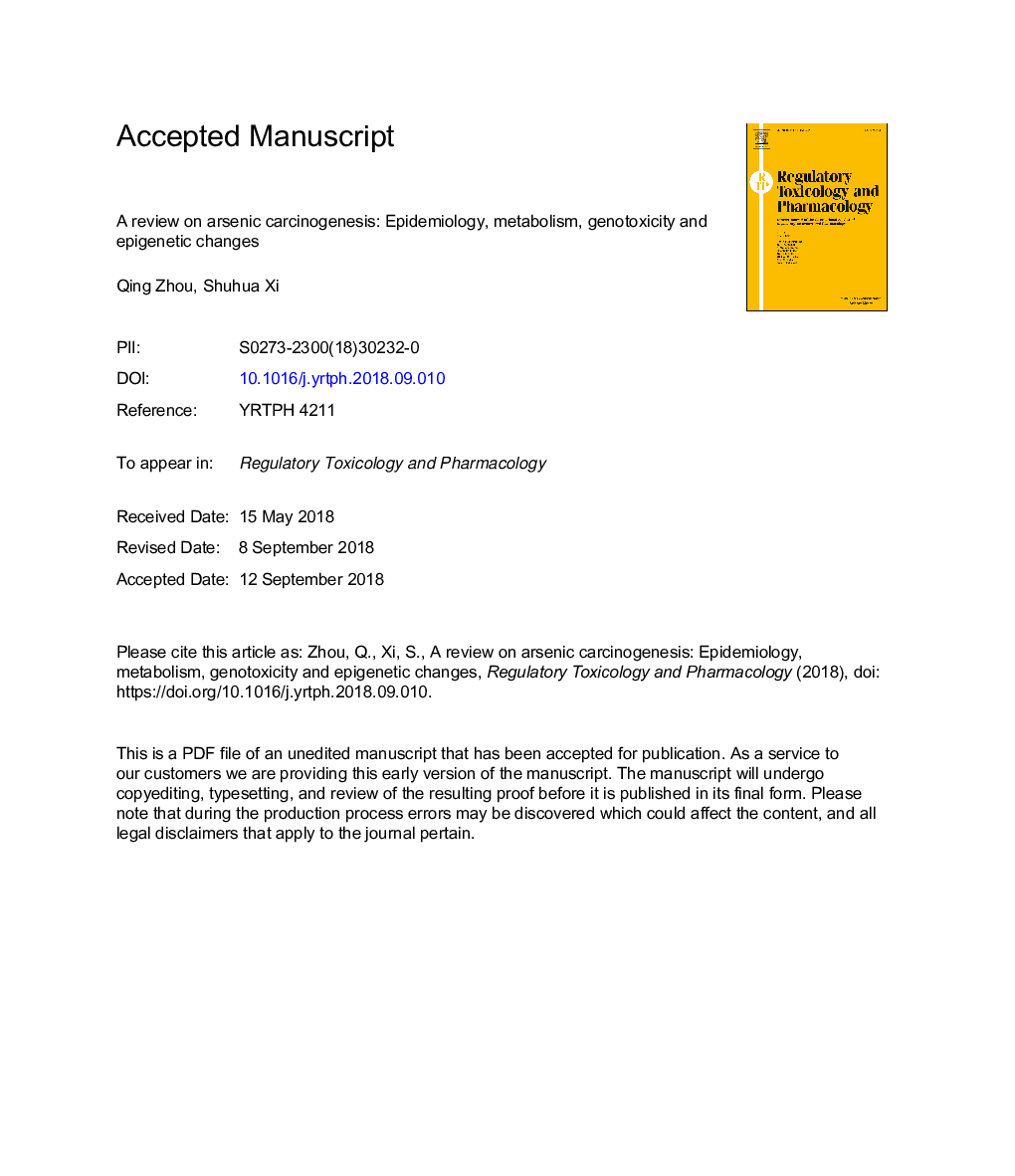| Article ID | Journal | Published Year | Pages | File Type |
|---|---|---|---|---|
| 10137726 | Regulatory Toxicology and Pharmacology | 2018 | 60 Pages |
Abstract
Long-term exposure to arsenic (inorganic arsenic) is a world-wide environmental health concern. Arsenic is classified as the Group 1 human carcinogen by the International Agency for Research on Cancer (IARC). Epidemiological studies have established a strong association between inorganic arsenic (iAs) exposure in drinking water and an increased incidence of cancer including bladder, liver, lung, prostate, and skin cancer. iAs also increases the risk of other diseases such as cardiovascular disease, hypertension and diabetes. The molecular mechanisms of carcinogenesis of iAs remain poorly defined, several mechanisms have been proposed, including genotoxicity, altered cell proliferation, oxidative stress, changes to the epigenome, disturbances of signal transduction pathways, cytotoxicity and regenerative proliferation. In this article, we will summarize current knowledge on the mechanisms of arsenic carcinogenesis and focus on integrating all these issues to garner a broader perspective.
Keywords
MMAgstoGlutathione-S-transferase omegaRPA1AS3MTERCC2DAPKDnmtDSBsBERSAMGSHNrf2PI3KSCEEGFJnkDMAc-Jun N-terminal protein kinaseDNA methyltransferaseERK1/2MAPKNF-кBROSS-adenosyl-L-methionineArsenicInorganic arsenicDimethylarsinous acidMonomethylarsonous acidChromosomal aberrationEpidemiologySister chromatid exchangebase excision repairExcision repairDNA double strand breaksmicronucleiCarcinogenesisepidermal growth factorVascular endothelial growth factorVascular Endothelial Growth Factor (VEGF)nuclear factor erythroid 2-related factor 2Nuclear factor-kappa BPhosphoinositide 3-kinasesMethylationSignal transductionmitogen-activated protein kinasedeath-associated protein kinaseGlutathioneReactive oxygen species
Related Topics
Life Sciences
Environmental Science
Health, Toxicology and Mutagenesis
Authors
Qing Zhou, Shuhua Xi,
